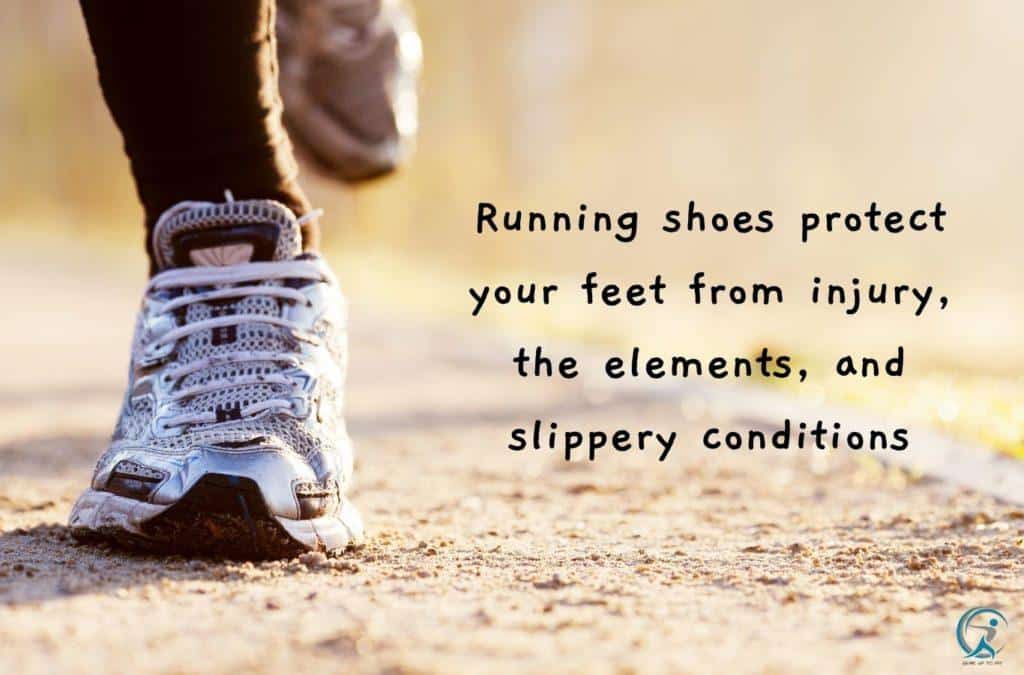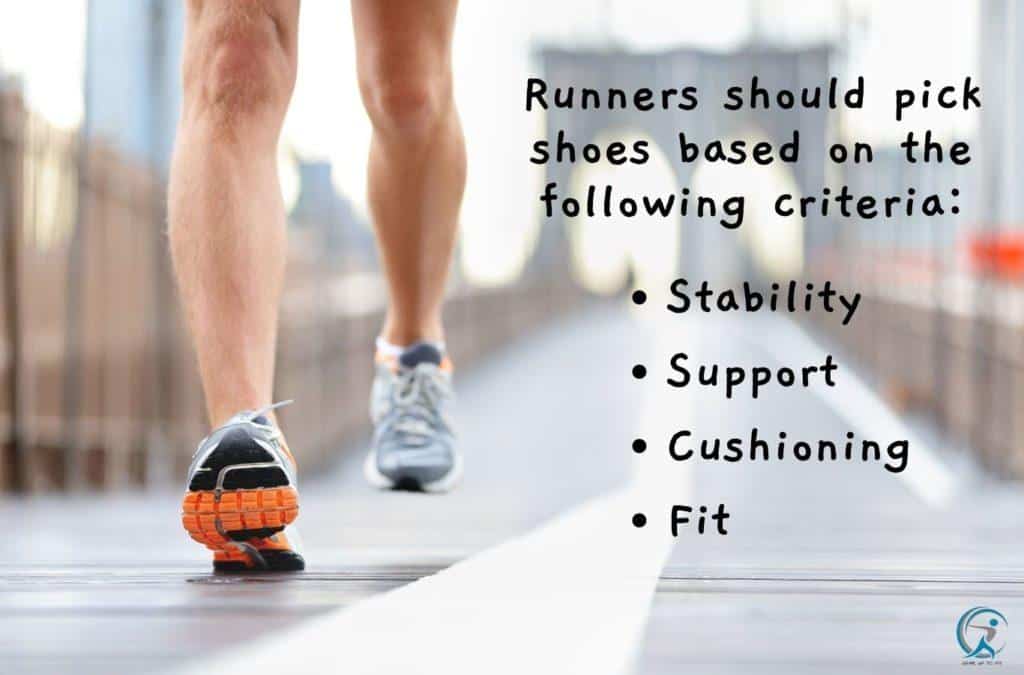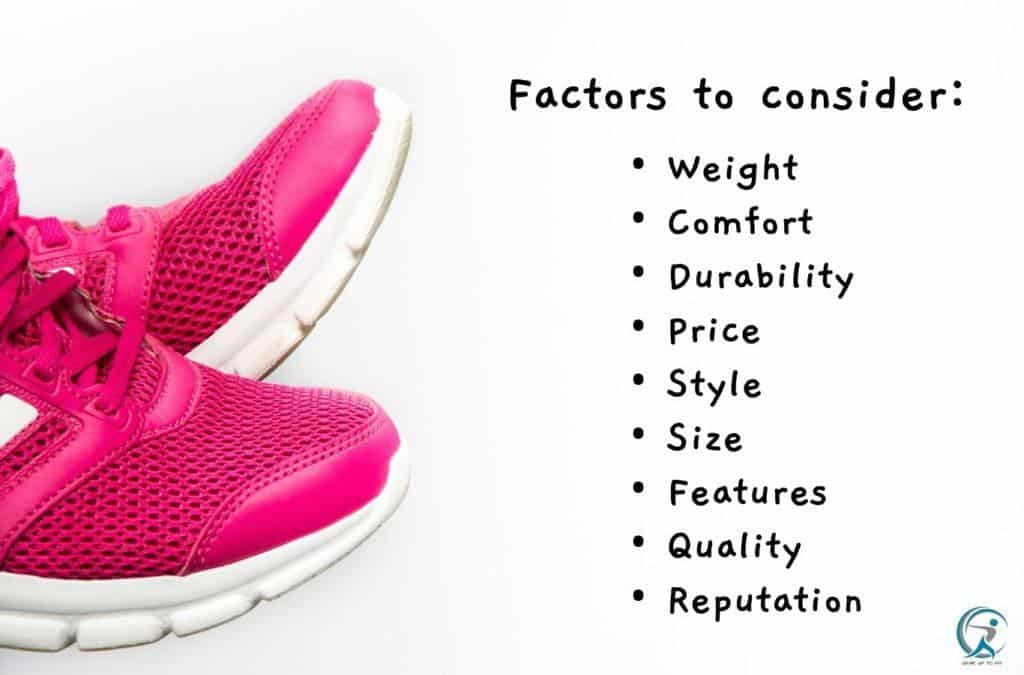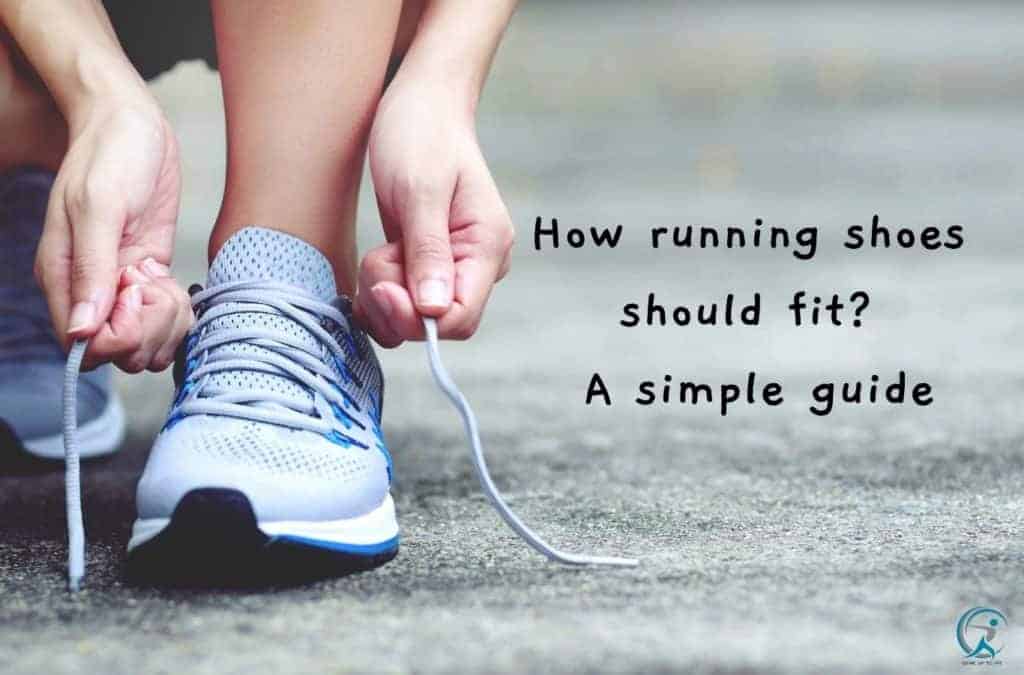Most people trying to solve their running injuries or improve their running performance are stuck focusing on the wrong things. I know because I was one of them. I wasted years on buying the ‘latest and greatest’ shoes, thinking that technology alone would solve my problems. See the Suunto Race 2 Review to stop chasing hype and start winning races.
It wasn’t until I discovered one simple principle that everything changed: the optimal fit of your running shoe is more critical than any marketing hype. In this guide, I’m giving you the exact playbook for how running shoes should fit. No theory. Just the battle-tested system that works to eliminate foot pain and unlock your true potential.
My Playbook: What You’ll Master in 7 Minutes
- Minute 1: The flawed assumption about shoe comfort that’s secretly sabotaging your success.
- Minutes 2-4: My ‘Fit Mastery Framework’ for achieving a correct fit predictably, every single time.
- Minutes 5-6: The three highest-leverage actions you can take this week to improve your foot health that cost $0.
- Minute 7: My hard-won lesson on the #1 mistake that guarantees failure in your fitting process.
The Real Problem Isn’t Your Effort, It’s Your Model

You’re working hard, but the results aren’t matching the effort. I get it. The reason is simple: you’re using a broken model. The “gurus” teach a model that rewards complexity and busywork because it keeps them in business. They’ll tell you to chase every new cushioning foam or carbon plate, ignoring the fundamental truth of running shoe fit.
My model is about getting disproportionate results from the right inputs. It’s about prioritizing your runner’s specific needs and understanding your unique foot anatomy.
The Core Principle I Learned The Hard Way: Obsess Over Precision, Not Price Tag
Success isn’t about doing more things; it’s about doing the right things with overwhelming force. We must stop thinking about our inputs (money spent on shoes) and start obsessing over our outputs (comfort, performance, and lack of running injuries). Here’s the mental model I use:
Effort vs. Leverage: My Personal Operating System
| Metric | The Grinder (99% of People) | The Strategist (My Approach) |
|---|---|---|
| Focus | Inputs (Brand, Price, Marketing hype) | Outputs (Results, Leverage, Precision running shoe fit) |
| My Take | This is the slow, painful path to foot pain and burnout. I’ve been there. | This is the only way to achieve exponential running performance and win long-term. |
Reading is one thing, but seeing it is another. This video was a game-changer for me in understanding this concept. Watch it before moving on.
My ‘Fit Mastery Framework’: Your Blueprint for Asymmetric Returns
After years of trial and error, seeing countless runners sidelined by improper fit, I’ve distilled everything down to this simple, three-part framework. It’s designed for maximum leverage and minimum waste in your fitting process. This is the exact system I use for myself and my athletes to ensure every pair of shoes contributes to peak stride efficiency and prevents blister prevention.
Part 1: The Bio-Mechanic Blueprint – Know Your Foot, Own Your Run
This is where you identify your single greatest point of leverage: your unique foot anatomy and how it interacts with the ground. Most people buy shoes based on looks or reviews, ignoring their own body.
I believe that’s a recipe for mediocrity and eventually, running injuries. Be world-class at understanding your feet. Ask yourself: ‘What does my foot need to function optimally during a run?’ That’s your unfair advantage.
My Action Step for You: Perform a Self-Guided Gait Analysis & Foot Measurement
Don’t just rely on someone else. I start with simple self-assessment. First, the wet test for your arch type: wet your foot and step on a piece of paper. The impression tells you if you have a high, neutral, or flat arch. This directly influences the support level you need. For example, flat arches often benefit from stability shoes or motion control shoes, while high arches might prefer neutral shoes. Next, observe your foot strike and pronational control.

Video yourself running barefoot for a few seconds. Do your ankles roll inward excessively (overpronation) or outward (supination)? This insight is invaluable. Finally, perform an accurate foot measurement, both length and forefoot width, for both feet. Most people have one foot slightly larger. Always fit to the larger foot. Head to this detailed guide on choosing the perfect pair for your unique gait for a deeper dive.
Your Foot Bio-Mechanic Blueprint
| Feature | Assessment Method | Shoe Fit Implications |
|---|---|---|
| Arch Type | Wet Test | High Arch: More cushioning, neutral shoes. Flat Arch: Stability shoes, motion control shoes. Neutral Arch: Versatile. |
| Foot Strike | Slow-motion Video (Heel, Midfoot, Forefoot) | Heel Striker: Extra heel cushioning. Mid/Forefoot Striker: Responsive forefoot width and flexibility. |
| Pronation | Video (Ankle roll) | Overpronation: Pronational control or stability shoes. Supination: More cushioning, neutral shoes. |
| Foot Shape | Tracing Foot | Determines toe box shape and forefoot width. Ensure toe splay. |
Part 2: The Precision Fit Protocol – Dialing In Your Shoe
Once you have your bio-mechanic blueprint, you need to apply it during the actual shoe testing. This is where most people get lazy. They try on a shoe, walk a few steps, and call it a day. That’s a mistake. You need a repeatable process to ensure an optimal fit. Here’s the system I created:
💡 My Pro Tip: Everyone obsesses over a quick comfortable feel, but they forget that a shoe’s true test comes after a mile or two. Your 100th step in a shoe will tell you more than your first.
My advice? Get to the 100th step (or more) as fast as humanly possible, even if it’s just on a treadmill in the store. Prioritize trying on shoes at the end of the day when your foot swelling is at its peak to account for real-world conditions during a run.
My Action Step for You: Master The 5-Point Shoe Evaluation
When you’re trying on shoes, don’t just feel for general shoe comfort. Focus on these five critical areas to achieve the correct fit. Always wear the sock choice you’d typically run in, ideally a performance running sock to aid in blister prevention.
- The Thumb Rule (Toe Box): You need a thumb’s width of space between your longest toe and the end of the toe box. Your toes should be able to splay naturally – this is crucial for stability and propulsion. Anything less, and you’re risking foot pain and blister prevention issues. Remember, foot swelling during a run can reduce this space.
- Secure Heel (Heel Slip & Heel Counter): Your heel should feel secure but not constricted. A slight heel slip is acceptable initially but shouldn’t be excessive. If it’s too much, it indicates an improper fit. The heel counter should cradle your heel without digging in. If you have narrow heels, explore advanced shoe lacing techniques like the runner’s knot.
- Snug Midfoot (Midfoot Support & Instep Pressure): The midfoot support should feel snug, almost like a hug, but without causing any pressure points or discomfort across your instep pressure. If it’s too tight, you could experience numbness. Too loose, and your foot will slide around, leading to friction and blisters.
- Optimal Forefoot Width & Toe Splay: Your forefoot width is critical. Your forefoot should fill the shoe laterally without feeling squished. You should be able to wiggle your toes comfortably and achieve full toe splay. This impacts your balance and how your foot naturally absorbs impact.
- The Flex Point Alignment: The flex point of the shoe should align with the natural flex point of your foot (where your toes bend). If the shoe bends too far forward or too far back, it will fight your natural foot mechanics, leading to inefficiencies and potential running injuries.
Shoe Lacing Techniques for Fine-Tuning Fit
| Lacing Problem | Solution & Benefit | How I Use It |
|---|---|---|
| Heel Slip | Runner’s Knot (Lace Lock) | Creates an ankle security loop, locking the heel in place. My go-to for downhill runs. |
| High Instep Pressure | Skip a Crossover | Relieves pressure on the top of the foot. Essential for high arches or when foot swelling occurs. |
| Wide Forefoot Width Needs | Window Lacing | Allows extra space in the toe box for toe splay without compromising midfoot support. |
| Narrow Foot (Shoe Volume) | Criss-Cross Lacing with Double Knots | Tightens shoe volume, preventing excessive foot movement. I use this for track workouts. |
Part 3: The Performance Optimization Loop – Sustaining Your Edge
Getting the initial running shoe fit is just the start. Real performance comes from consistently maintaining that optimal fit and understanding the dynamics of your shoes over time. Most people buy a pair, run them into the ground, and then wonder why they get hurt. This is where shoe rotation and recognizing shoe wear patterns come in.
My Action Step for You: Implement a Smart Shoe Lifespan & Shoe Rotation Strategy
Running shoes aren’t meant to last forever. Their cushioning and support level break down, leading to improper fit and increased risk of common foot problems. I track my mileage religiously. Most shoes last 300-500 miles.
Don’t push it beyond that. More importantly, implement shoe rotation. I keep 2-3 pairs in active rotation for different purposes: a daily trainer, a faster shoe for workouts, and sometimes a trail running shoe fit for off-road adventures. This allows shoes to decompress, extends their shoe lifespan, and helps identify subtle changes in running shoe fit as shoes age. It’s a key strategy for injury prevention.
If you need new options, check out the best running shoes of 2024.
Shoe Wear Patterns & What They Tell You About Your Fit
| Wear Pattern | Indication | Fit Adjustment / Strategy |
|---|---|---|
| Excessive outer heel wear | Supination or neutral foot strike. | Likely fine with neutral shoes, but confirm cushioning is adequate. |
| Excessive inner heel/arch wear | Overpronation. | Consider stability shoes or motion control shoes. Re-evaluate pronational control. Best shoes for overpronation can help. |
| Wear under big toe | Normal push-off. | Indicates a healthy toe-off, confirming adequate toe box and flex point. |
| Wear under little toe | Possible forefoot width issues or rigid shoe. | Check for sufficient toe splay. Might need a wider toe box or different shoe shape. |
| General midsole compression | Shoe reaching end of shoe lifespan. | Time for replacement. Shoe rotation can delay this. |
Sometimes, despite the perfect shoe, ongoing foot pain or issues like plantar fasciitis can persist. In these cases, it’s worth considering targeted strengthening.
I’ve found that incorporating specific foot exercises into your routine can dramatically improve intrinsic foot strength and overall foot health, complementing the optimal fit of your shoes.
What The ‘Gurus’ Get Wrong About Running Shoe Fit
The internet is full of bad advice on running shoe fit. Here are the three biggest lies I see, and what I do instead. For a deeper dive on this, the following video is a must-watch.
| The Lie I See Everywhere | The Hard Truth I Learned | Your New Action Plan |
|---|---|---|
| ‘Just buy the most expensive shoes.’ | Price doesn’t guarantee optimal fit or running performance. Fit is king. Period. | My challenge to you: Focus on the fitting process, not the price tag. Your shoe size is a starting point, not the end-all. |
| ‘One shoe size fits all brands.’ | Sizing discrepancies are rampant. A 9 in Nike might be an 8.5 in Hoka. | Always try on the shoes. Don’t order online based on your last shoe size. Go for a trial run in the store. |
| ‘If it feels good in the store, it’s good.’ | Foot swelling during activity changes everything. A store walk isn’t a run. | Test the shoe extensively. Simulate actual running conditions. Spend time evaluating toe box, heel slip, and midfoot support. Consider a dedicated guide on how to choose the best running shoe. |
Another common mistake is ignoring specialty running store expertise. While I advocate for self-knowledge, a good specialty store will perform a gait analysis and help you navigate the nuances of different running shoe type options, like the best running shoes for flat feet, or the differences between road running shoes fit and trail running shoes fit.
Frequently Asked Questions
How much space should be in the toe box of a running shoe?
Simple. You need about a thumb’s width of space between your longest toe and the end of the shoe. The reason is foot swelling during activity and proper toe splay for stability. Most people overcomplicate this. All that really matters is that your toes aren’t crammed and have room to move, preventing blister prevention issues and ensuring a comfortable shoe comfort.
What are the signs of improper fit in running shoes?
The signs are clear if you know what to look for. Common red flags include heel slip, numbness or tingling in your toes (too tight in the toe box or midfoot support), pressure points, hot spots leading to blisters, or a lack of ankle security. Persistent foot pain or new running injuries after a few runs are screaming indicators of an improper fit. These are outputs telling you your inputs are wrong.
Should I sizing up or sizing down for running shoes?
Generally, you should consider sizing up by half to a full shoe size from your casual shoes. This accounts for foot swelling and the critical thumb’s width in the toe box. Never sizing down unless you’ve been incorrectly fitted for years.
Always rely on an actual foot measurement, ideally at the end of the day, and perform a trial run to confirm the optimal fit. Beginner runners often underestimate the importance of this.
Can the wrong running shoe fit lead to running injuries?
Absolutely. It’s one of the biggest culprits. An improper fit can throw off your entire stride efficiency and running biomechanics, leading to issues like plantar fasciitis, Achilles tendonitis, shin splints, and even knee pain.
Lack of proper midfoot support, inadequate toe box space, or excessive heel slip all contribute to a breakdown in your natural movement, causing repetitive stress where it shouldn’t be. This is why a correct fit is paramount for injury prevention.
Final Words: Stop Thinking, Start Doing.

I’ve given you the entire playbook. My model, my framework, my action plan for achieving the perfect running shoe fit. The only thing separating you from the result you want – whether it’s faster times, longer distances, or finally running pain-free – is execution.
The game is won by the person who is willing to put in the deliberate work of understanding their body and applying these principles. The opportunity to elevate your running performance and foot health is there. The question is, what are you going to do about it?
